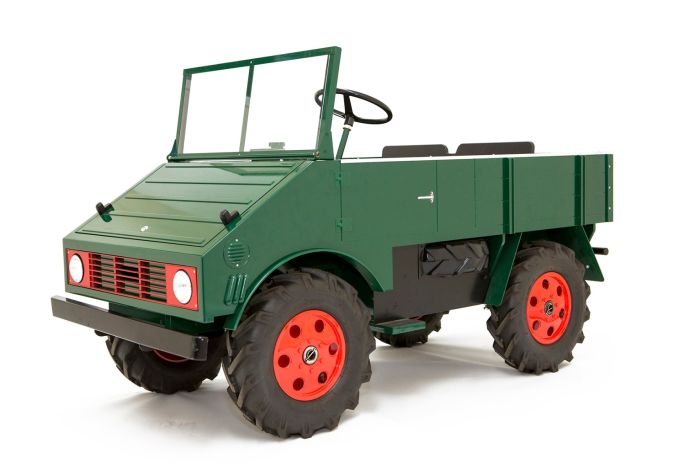Recommended Suggestions For Choosing Kids Cars
Recommended Suggestions For Choosing Kids Cars
Blog Article
What Should You Look For When Buying A Ride-On Vehicle For Toddlers?
Be aware of the following aspects when buying a ride-on vehicle for your child: Age, size, developmental stage. These are all important in ensuring that it is suitable and safe for your child. Here are a few things to take into consideration:
Younger toddlers (1-3 years old) - For toddlers younger than 3 years old consider ride-on cars specially designed for the age range they are in. These cars feature a low and sturdy design, easy controls, and features like buttons and steering wheels, or levers. Pick a ride-on car with a broad base for the best stability and to minimize the chance of falling over.
Children who are older (3plus years old) As children get older, they can handle more sophisticated ride-on vehicles with additional features and controls. Consider cars with adjustable seat, larger weight capacity, and more interactive features like lights, sound or music. Consider a ride-on vehicle that has adjustable speed settings and parental control. This will allow you to cater for various levels of ability and provide safety.
Size
Height and weight: When selecting a car for your child, take into account their weight and height. Pick a car that has seats that are appropriate for your child's height and weight. Avoid cars that are too big or too small, since they could create a risk of discomfort or even danger for your child to travel in.
Comfort and Legroom: Ensure your child sits comfortably and has enough legroom on the ride-on. The size of the seating area should be appropriate for the size and height of your child.
Stage of development
Motor Skills - When choosing the appropriate ride-on it is important to consider your child’s motor skills and ability to coordinate. Littler toddlers might require simpler features and controls, while older children can handle more complex controls and features that are interactive.
Independence and Confidence- Ride-on vehicles can foster confidence and independence in children, by teaching them how to manage their car and navigate. Select a car that will allow your child to master the ability to steer, accelerate, and brake independently. This will increase their confidence and motor skills as they progress.
Be aware of your child's interests and involvement when selecting the right ride-on car. Choose a car with themes, colors, or features that appeal to your child's interests, whether it's a classic car or sports car, truck, or themed car with a character.
You can pick the ride-on car that is comfortable, safe and can be educational for your child based on their size, age and their developmental stage. Take a look at the top Mercedes kids car for blog tips including electric ride along car, toy car, electric car ride, electric car ride, car electric ride on, ride ons, remote control childrens car, childs electric ride on car, kidscars, ride of car and more. . 
What Are The Best Models For Kids Cars? Designed For Indoor And Outdoor Use?
These models have been designed with specific features and characteristics specific to the environment and usage scenario, whether either outdoors or indoors. They are constructed differently - Indoor Use Cars
Size and weight-Cars intended for indoor usage will be smaller in dimensions and weigh less, making them easier to maneuver around small spaces. These include playrooms and living spaces. They're small enough to maneuver around tight corners and narrow passageways without damaging furniture or walls.
Low Ground Coverage - Cars intended for indoor use feature the lowest ground coverage to avoid them getting stuck or snagged against obstacles like carpets or thresholds. This ensures smooth and unhindered moving over indoor surfaces.
Smooth Wheels: The wheels on indoor cars are usually made from smooth materials like plastic or rubber. This gives traction and grip for smooth surfaces like flooring made of hardwood laminate floors, tiles. They are designed to minimize sound and prevent scratching of indoor surfaces.
Limited Speed - Indoor vehicles are typically limited in speed, to allow for safe and controlled driving in narrow space. This helps prevent collisions or accidents caused by walls, furniture, or other obstacles in the indoor space.
Outdoor Use Cars -
Durable Construction- Cars which are made for outdoor use are constructed with durable materials. They may be made of strong metal or plastic to withstand outdoor elements like the sun, humidity, temperature variations, and rough handling. They are built to withstand the extreme conditions of outdoor usage.
Higher Ground Clearance - Outdoor use cars have higher ground clearance to maneuver through bumps, uneven terrain or obstacles found in the outdoors. They are now able to navigate rough surfaces including pavement gravel, grass and dirt.
Traction tires - Tires designed for outdoor vehicles are usually equipped with treads and patterns that offer better grip and traction on slippery or uneven surfaces. This ensures stability and control while driving outdoors, preventing sliding or sliding.
Weather Resistance. Outdoor vehicles are usually equipped with weather-resistant components like sealed electronics, waterproof casings and rust-resistant material. This protects the car from damage caused by environmental factors. They can withstand the elements of rain, mud, or puddles and still perform.
Outdoor-use cars have greater speed limits to allow for huge areas and distances. This can provide a thrilling and adventurous riding experience for children exploring outdoor environments.
Parents can choose a vehicle for their children that meets their needs, whether indoors or outside, by taking into consideration the style and features. This will guarantee a fun, safe and lasting play experience. See the top read more on Lamborghini kids car for blog examples including car toy car toy, electric rideons, car toy car toy, race car toy, 2 seater electric cars, childs electric ride on car, two seater childrens electric cars, toy cars, childs electric ride on car, toy the car and more. . 
What Are The Possibilities For Children's Remote-Controlled Vehicles? What Are Their Advantages And Disadvantages?
Remote control children's cars Also known as RC cars, or remote-controlled vehicles are available in a variety of dimensions and styles. They also come in a variety of prices to meet different budgets and tastes. Here's a breakdown of the pros, cons, and the sizes of remote controlled children's cars.
Electric RC Cars - Battery-powered remote-controlled cars that are suitable for outdoor and indoor use. The cars come in various designs, including buggies or trucks.
Nitro RC Cars – Gas powered remote controlled cars which offer greater performance but need greater maintenance. They are generally larger and more costly than electric RC cars.
Scale models can be described as replicas of real-world vehicles such as cars and trucks. They can also be controlled remotely. Scale Models are available in a variety of scales that range from 1-10 to 1-24. Larger scales provide greater detail and an authentic appearance.
Sizes -
Children's remote-controlled cars are available in various sizes. The range of sizes ranges from small replicas to larger-scale models. The size of the vehicle has an impact on its performance, speed and handling capabilities.
Micro-sized cars are small and lightweight, making them perfect for indoor play and use by children who are younger. The larger models provide more performance and endurance, making them suitable for off-roading and racing.
Prices
The cost of a remote-controlled car for children varies depending on the size and features, the manufacturer, and build-quality.
The cost of small-sized electric RC vehicles range between $20 and $100. However larger-scale electric or nitro RC models can range between $100-$500.
Model cars in scale and top-of-the-line hobby RCs can cost anywhere from a few hundred and over a 1,000 dollars, based on how detailed and strong they are.
Pros and Cons
Pros -
Children and adults alike will be able to enjoy endless hours of entertainment and fun by controlling their cars via remotes.
Skill Development. Driving a RC car allows children to develop hand-eye-coordination as well as spatial awareness and problem-solving abilities.
Social Interaction: RC cars are ideal for social interactions with your family and friends.
Customization - A lot of RC vehicles can be upgraded with upgrades and accessories, which can improve their performance and appearance.
Cons
Costs - Quality remote control children's vehicles can be costly and can be expensive, particularly models that are hobby-grade with sophisticated features.
Learning Curve - Controlling an RC car requires practice and skill, and younger children may struggle with the controls in the beginning.
Maintenance It is important to maintain the vehicle regularly for RC cars like cleaning, lubrication, and repairs.
Safety Issues - RC vehicles pose dangers to safety like falls, collisions and electrical hazards when not operated under the supervision of an adult and with proper care.
The most effective remote control for kids vehicles are ones that offer an educational and exciting experience for children of all age groups. When selecting the ideal model for your child but you should take into consideration a variety of factors, such as dimensions, features for price and safety. Hobby-grade RC cars are appropriate for older children and enthusiasts, while simpler models are ideal for younger youngsters and those who are just beginning. Have a look at the top remote control childrens cars kidscars.co.uk advice for more examples including car toy toy, childrens electric cars, kidscars, toy cars toy car, electric ride on cars, childs electric ride on car, childs car toy, childs car toy, car electric ride on, toy and car and more. .